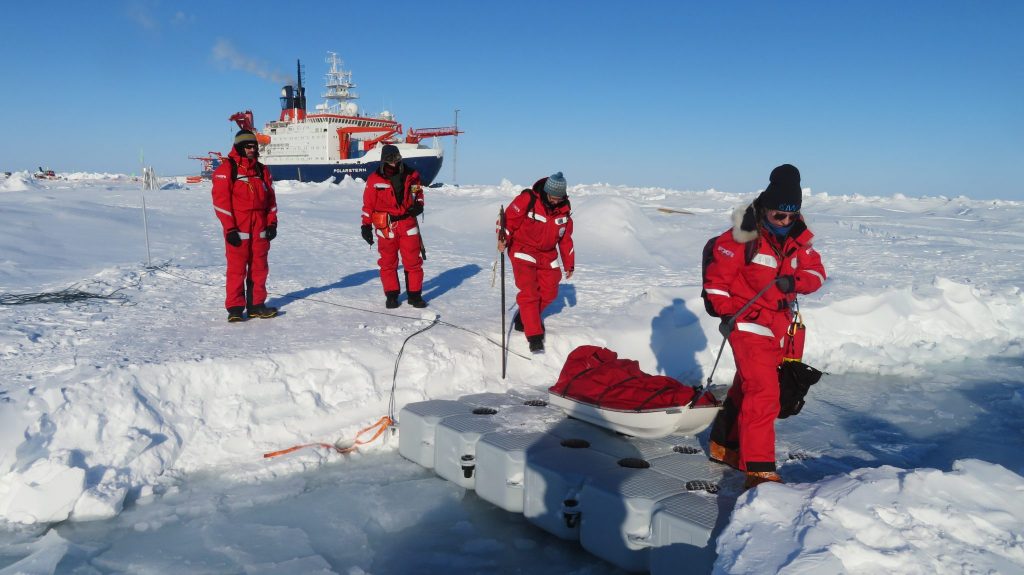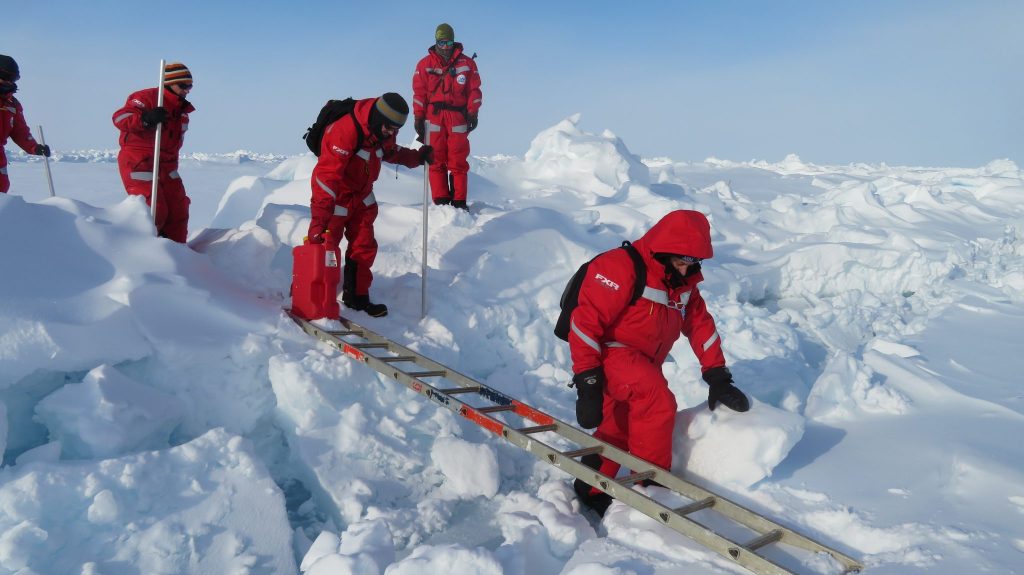MOSAiC Leg 3 – Part 3 of 5
by Julia Schmale
April was a very busy month on the MOSAiC floe. After a turbulent time in March, something like a routine settled in and science activities were in full swing. The weather was generally benign, allowing us to spend much time on the ice. We experienced our first warm air mass intrusions from the south and melt. But the quiet beginning of April was treacherous, after two weeks lots of action was required again to keep things running on the ice …
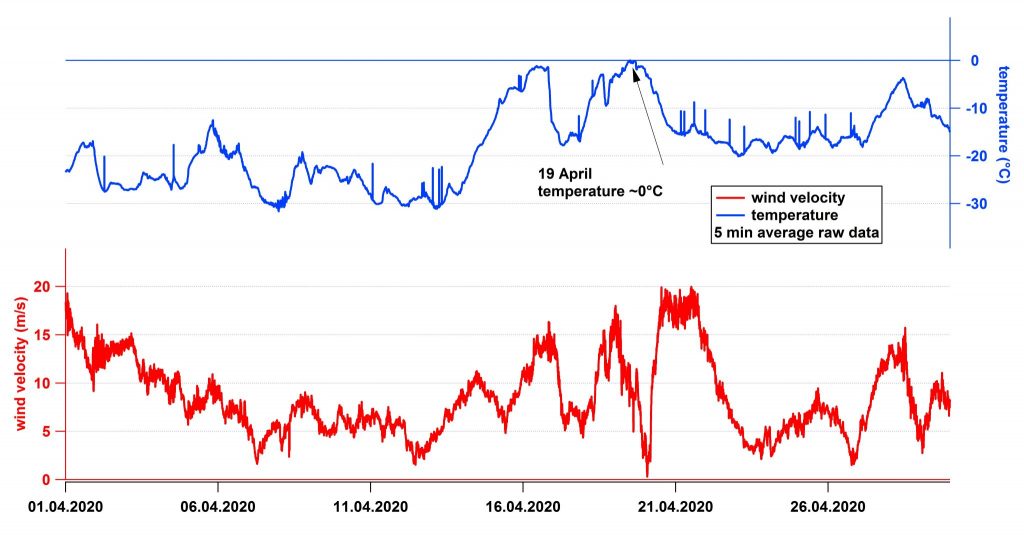
A routine day would start with breakfast, then the weather briefing at 8h15 followed by a recap of the daily activities at 8h30 based on the updated weather information. Between 9h00 and 11h30 the first slot of outdoor work would happen. If needed, another confirmation or reshuffling of activities was discussed at 12h30 and people went out again between 13h00 and 17h30 with a cake break around 15h30 if needed. After dinner the general evening meeting with updates (e.g. corona news), highlights and planning for the next day would happen. Most evenings offered a diverse spare time activity program including soccer, Frisbee or hikes on the ice (Sundays), water polo, chess, classical music, board games, bar evenings – or more work…
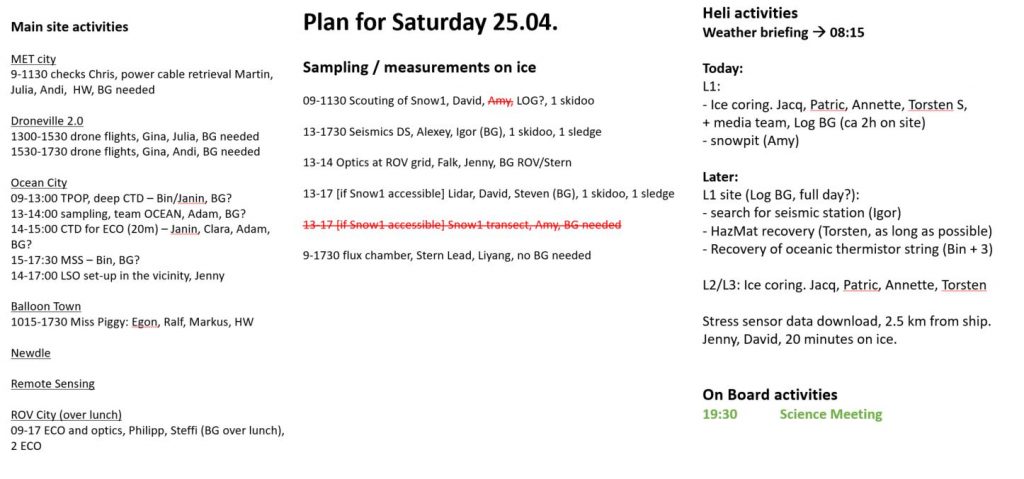
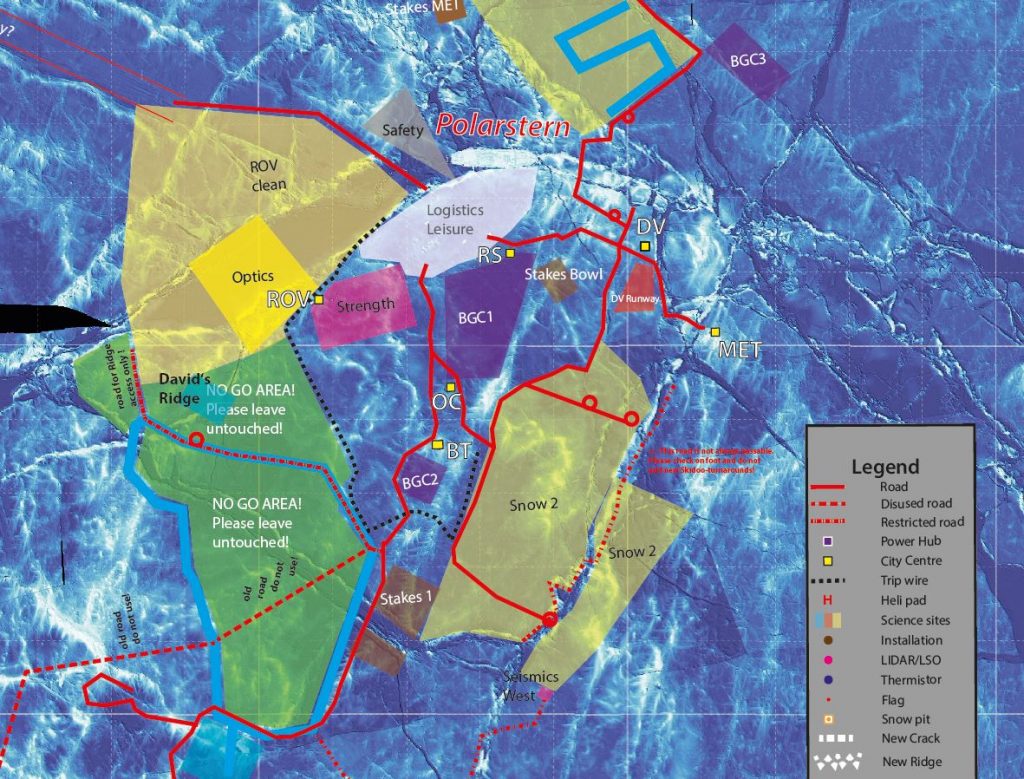
Many of the scientific activities were performed regularly in designated areas on the floe. The following images provide some snapshots of activities (without claim of completeness).
Team ICE conducted regular transects with a snow micro-pen to study the snow density, its water content and depth. Ice thickness was studied as well, for example, in locations where leads had formed and froze over.
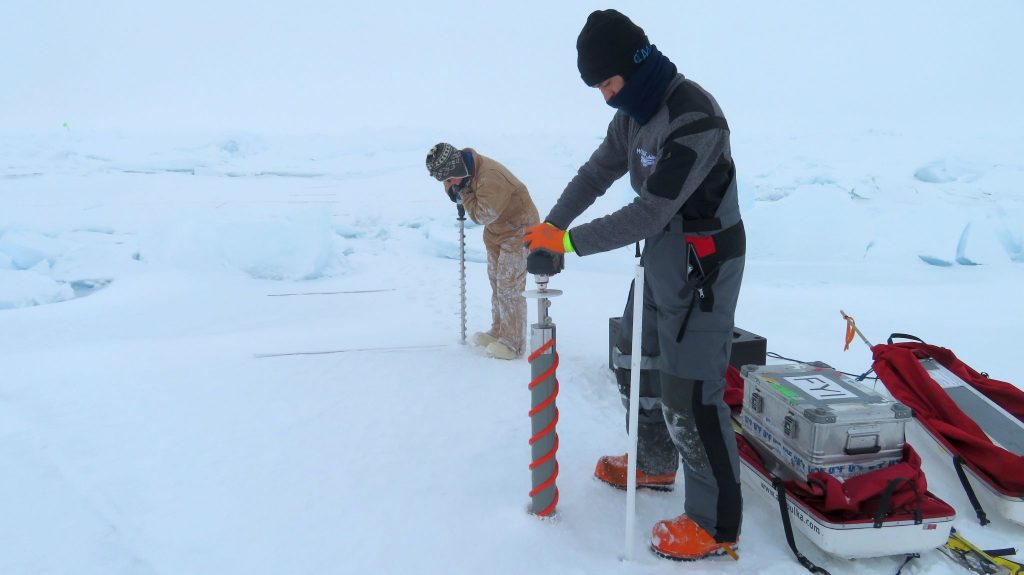
The biogeochemistry team (BGC) often set out to take samples of snow, frost flowers, ice cores and water.
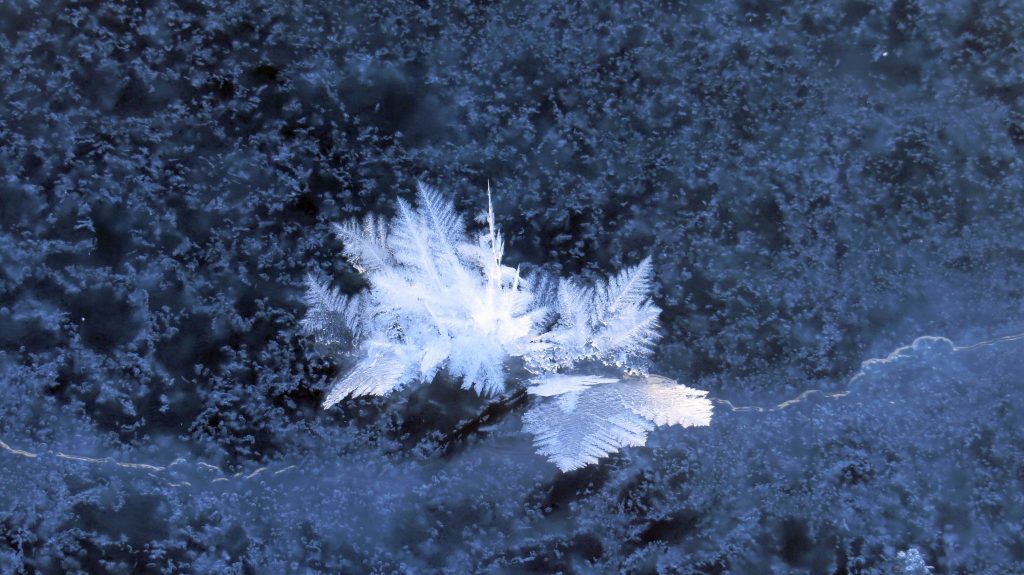
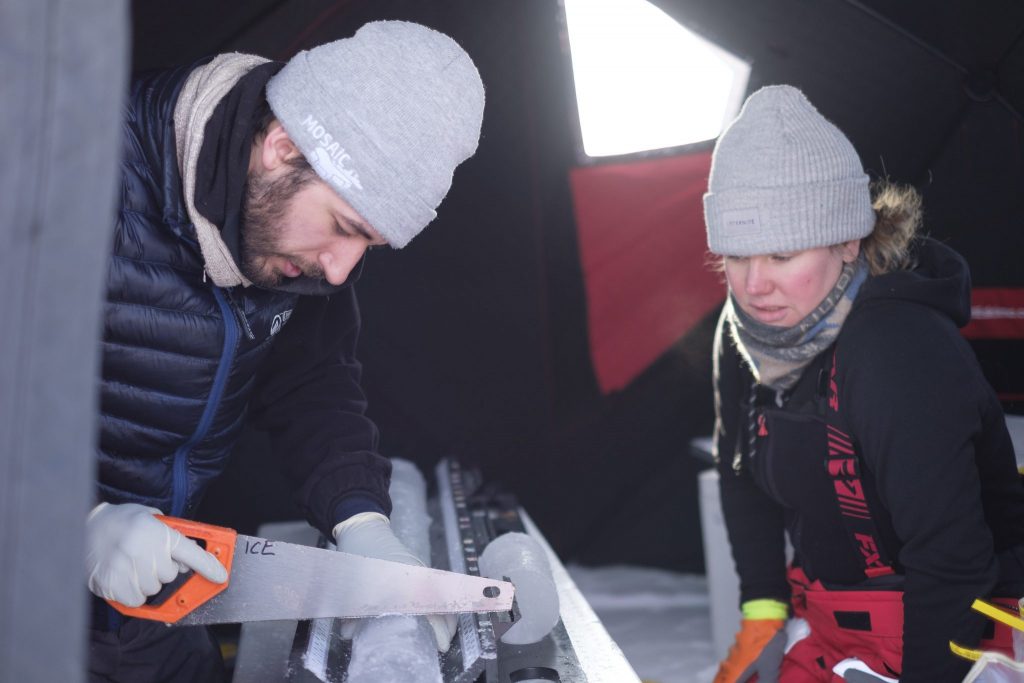
Team OCEAN spent much of their time in Ocean City, operating the CTD (conductivity, temperature, depth) rosette.
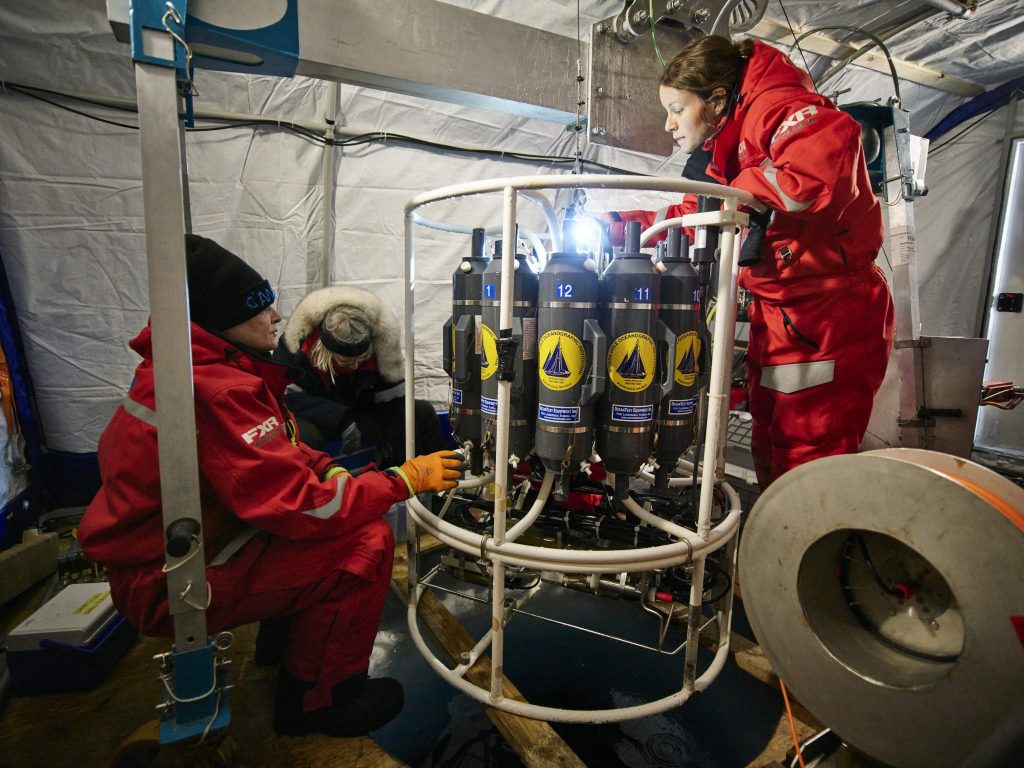
Team ECO very often obtained water samples from Ocean City and assessed the abundance of copepods.
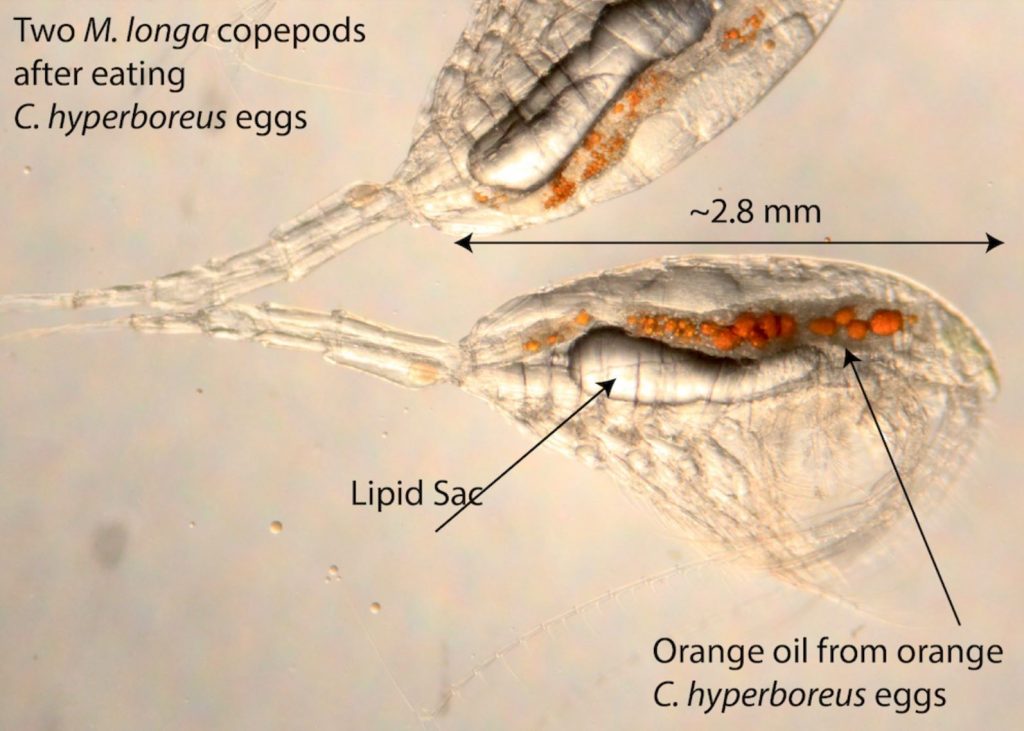
Team ATMOS operated in four main locations, that is the container deck on the ship, Met-City, Droneville and Balloon town.
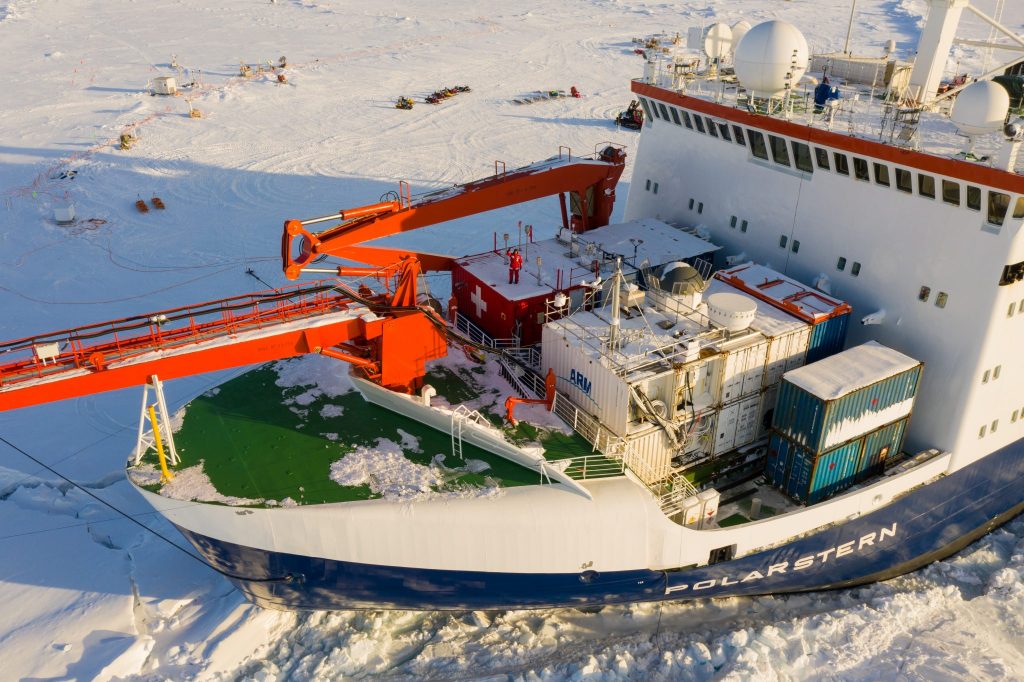
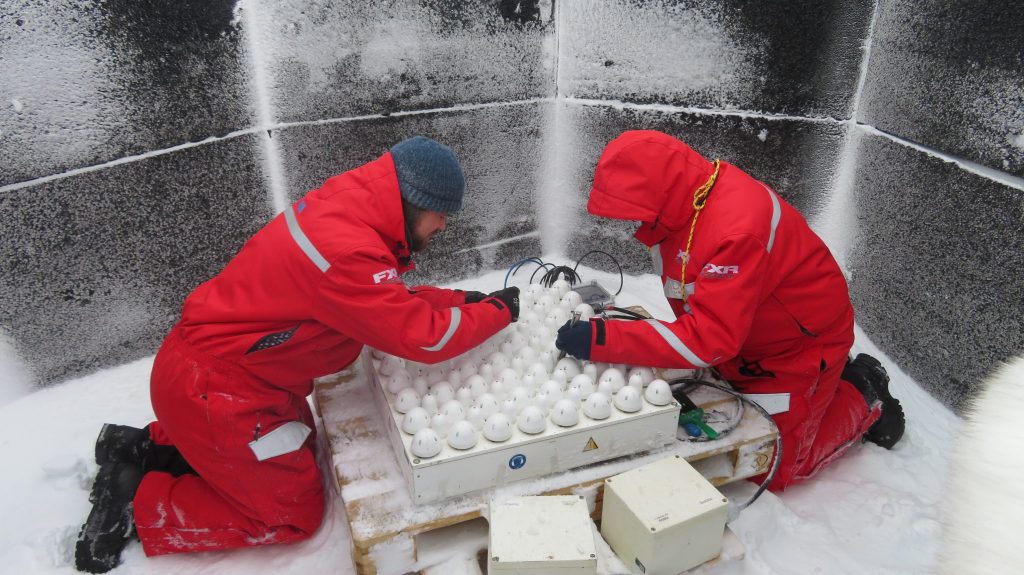
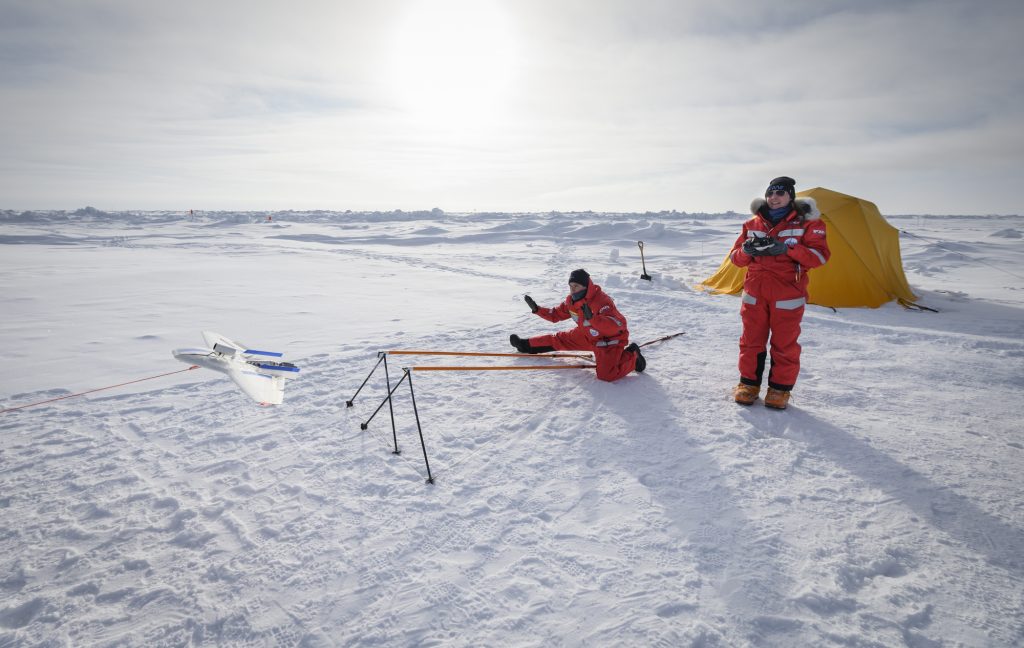
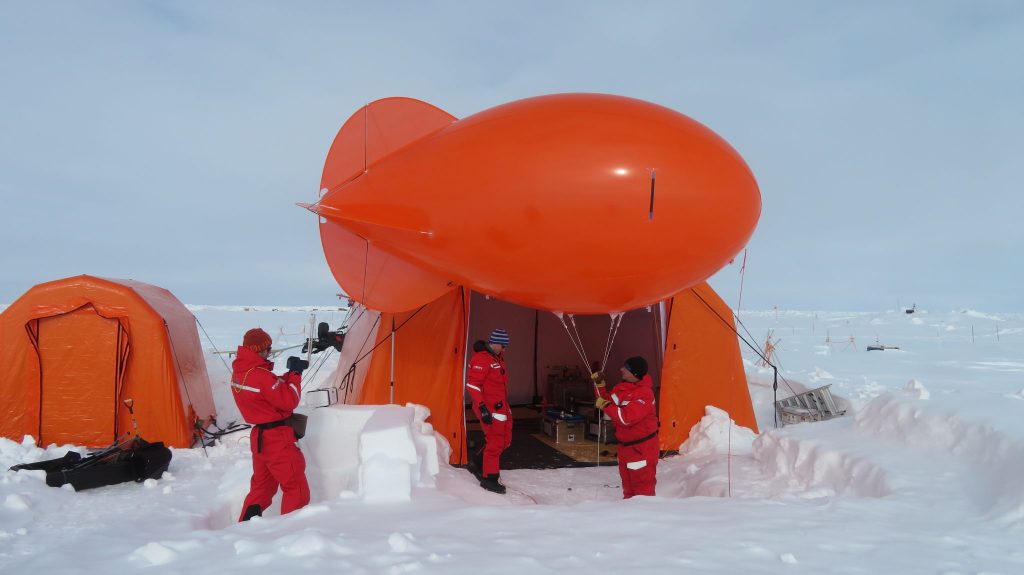
April was scientifically very productive with all these measurements conducted and samples taken. It was also scientifically very exciting when the first warm spells from the south after 14 April occurred. Clouds visibly contained mostly liquid droplets. First signs of melt could be observed then as well and temperatures rose above 0°C. In terms of atmospheric chemistry observations, the southerly air mass intrusions featured completely different microphysical and chemical aerosol properties. First signs of oxidation products from microbial emissions were visible. Also ozone concentrations increased again after an almost complete depletion in March and early April. A period which was also characterized by presence of halogens in the air. The southerly air mass intrusion basically washed out the winter time Arctic air mass and introduced a new regime.
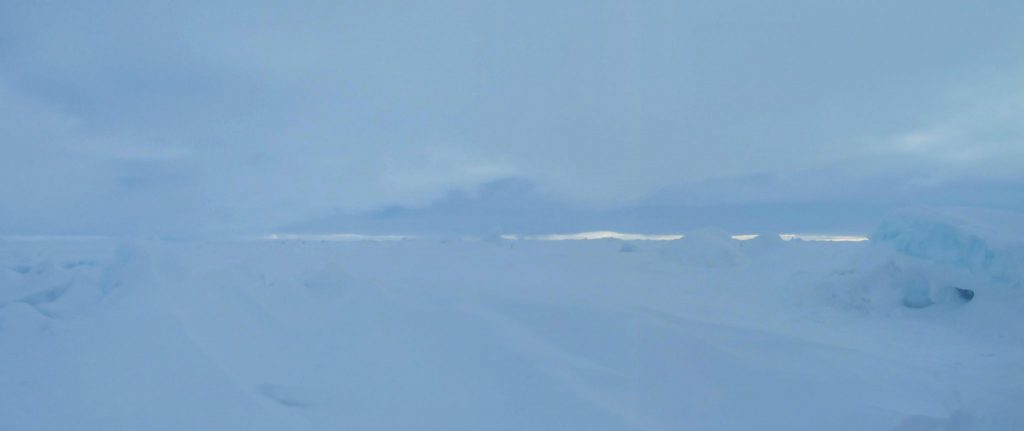
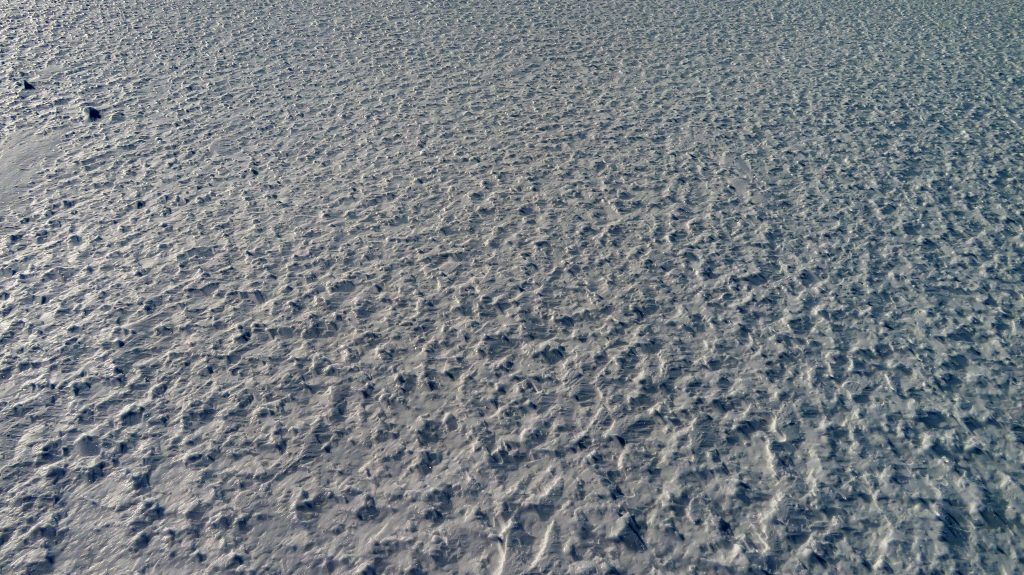
However, we were not granted much time to dwell over the fresh and exciting data. In between the warm air mass intrusions on 17 April several new cracks opened in the central observatory and endangered the power supply.
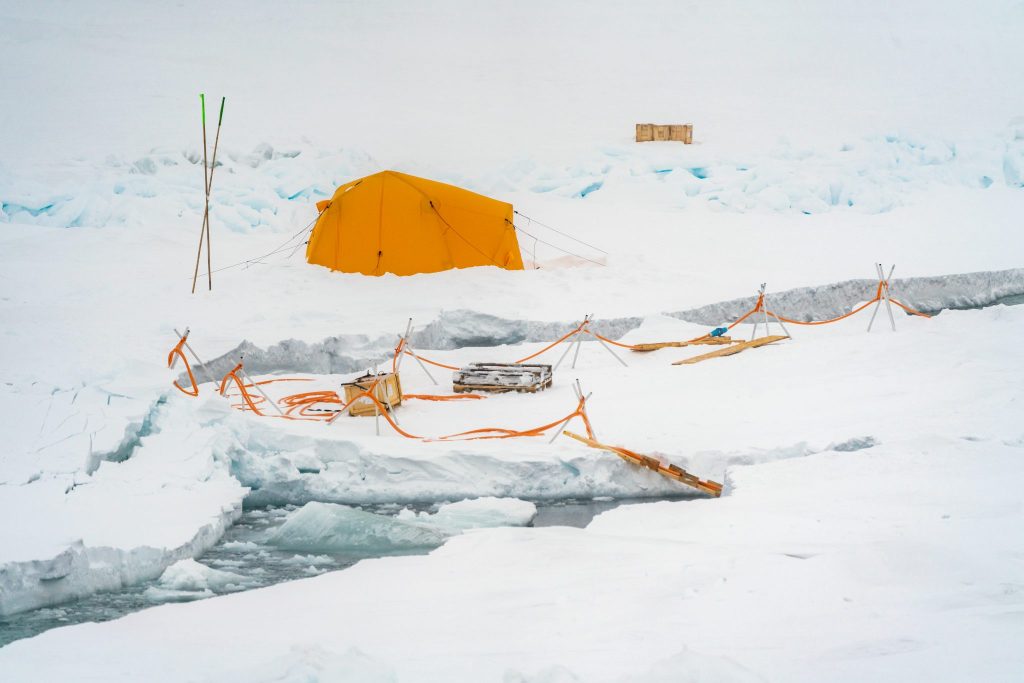
Giving slack to the power lines was unfortunately not enough as the cracks opened dramatically the following day. Kayaks had to be mobilized to get people and cables across. Retrieving the cables, which are very heavy and would sink immediately once lose, worked in some places, but not in others. Because the leads were so large, large pieces of ice drifted across them, pulling the cables with them.
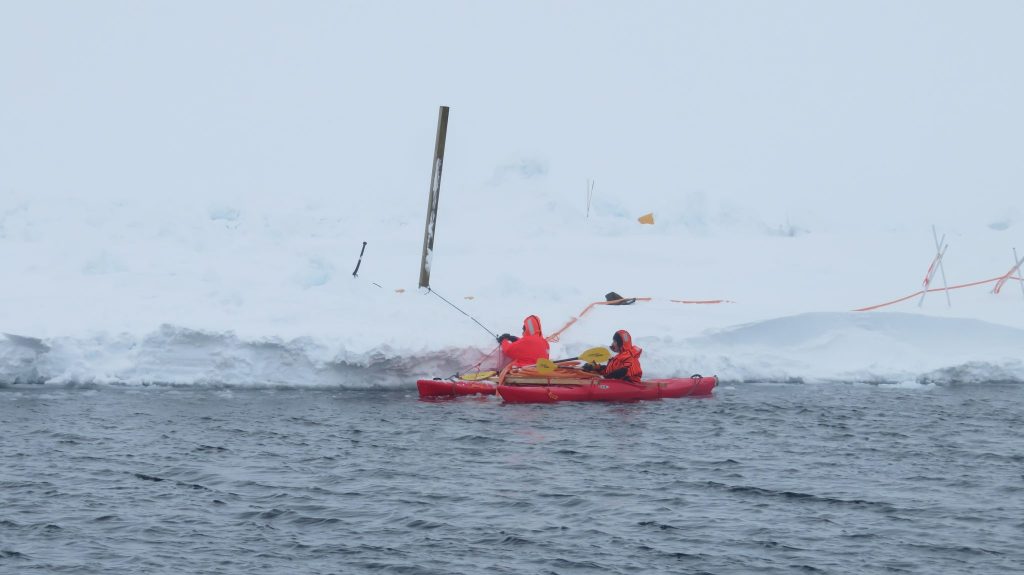
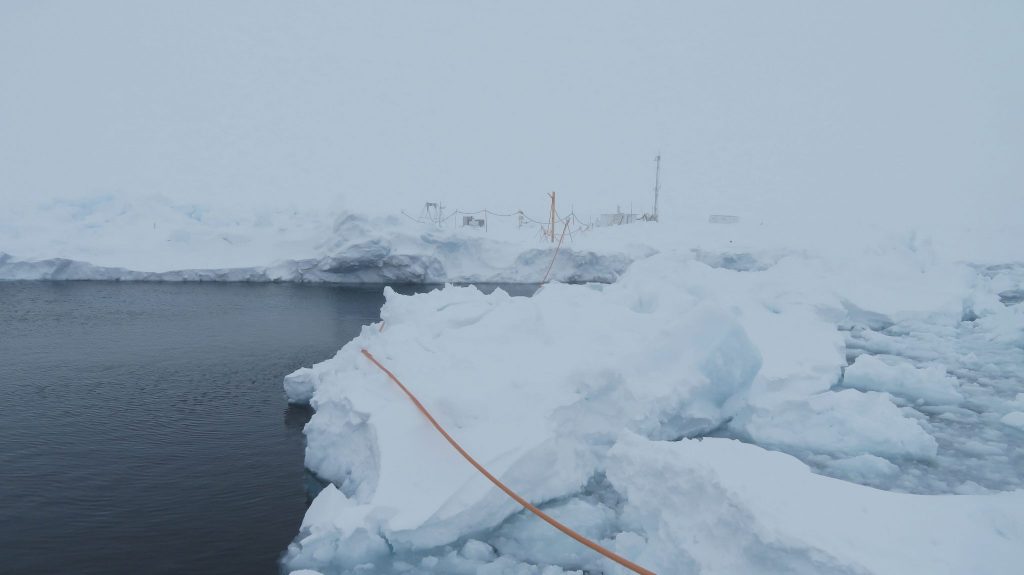
After the situation had been solved, mostly by setting up generators, some equipment was moved to different areas on the floe.
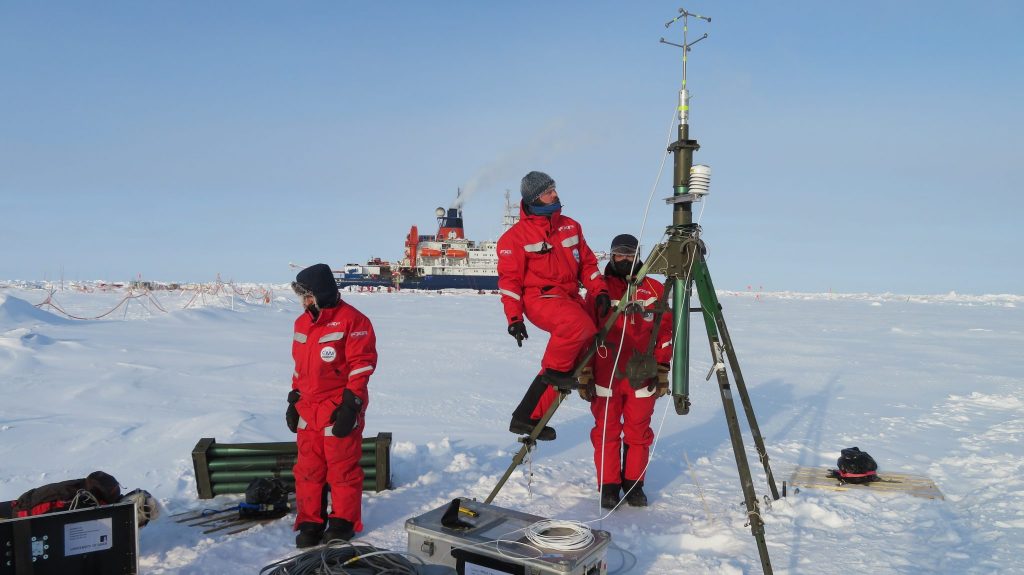
However, not all could be moved and some major effort had to be done to make places like Met-City accessible. First a fixed rope was installed over the lead by the logistics team and then a raft was installed to bring people across.
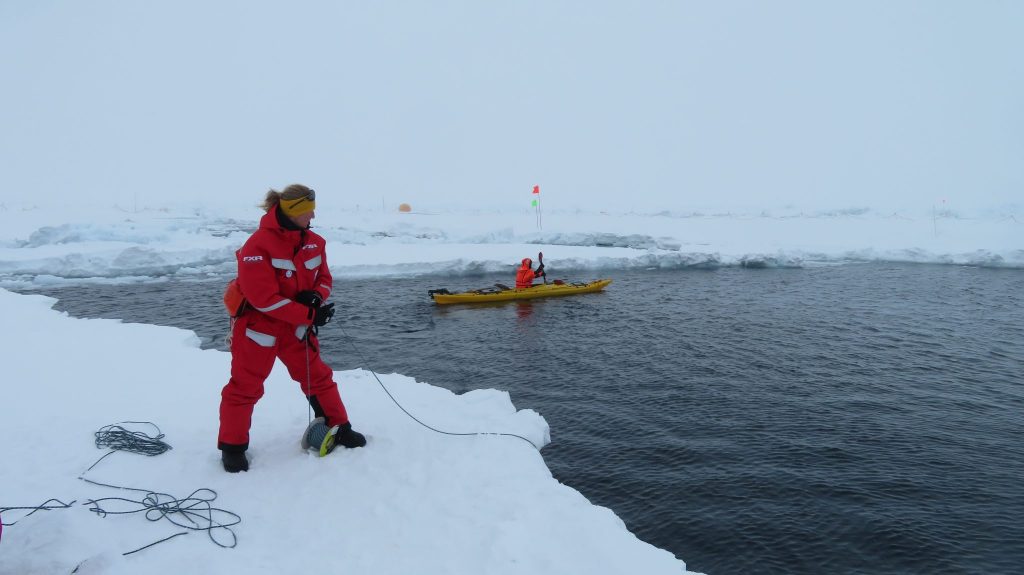
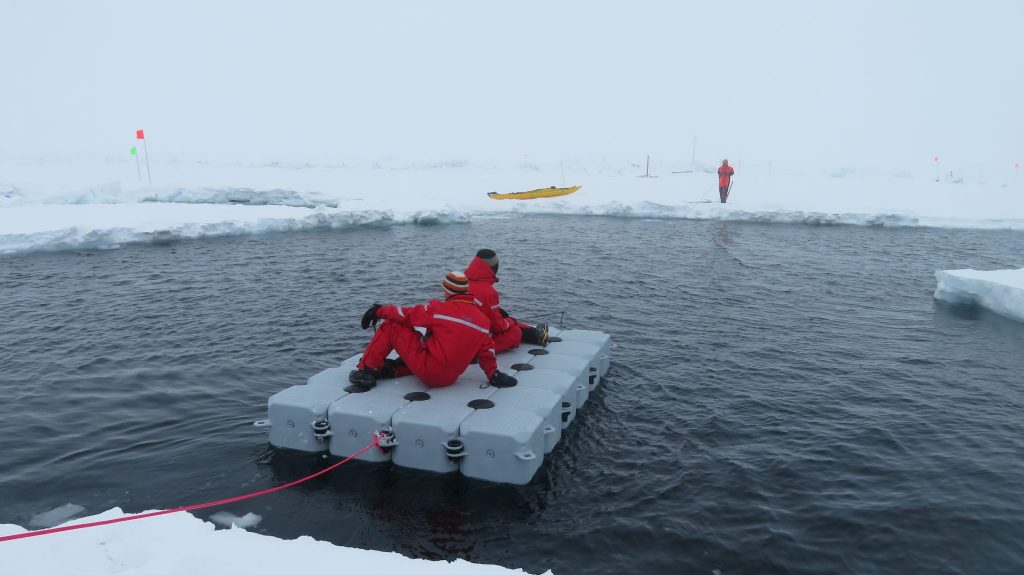
Later on the ice floes moved closer together again and accessing our work places on the ice became significantly easier.
